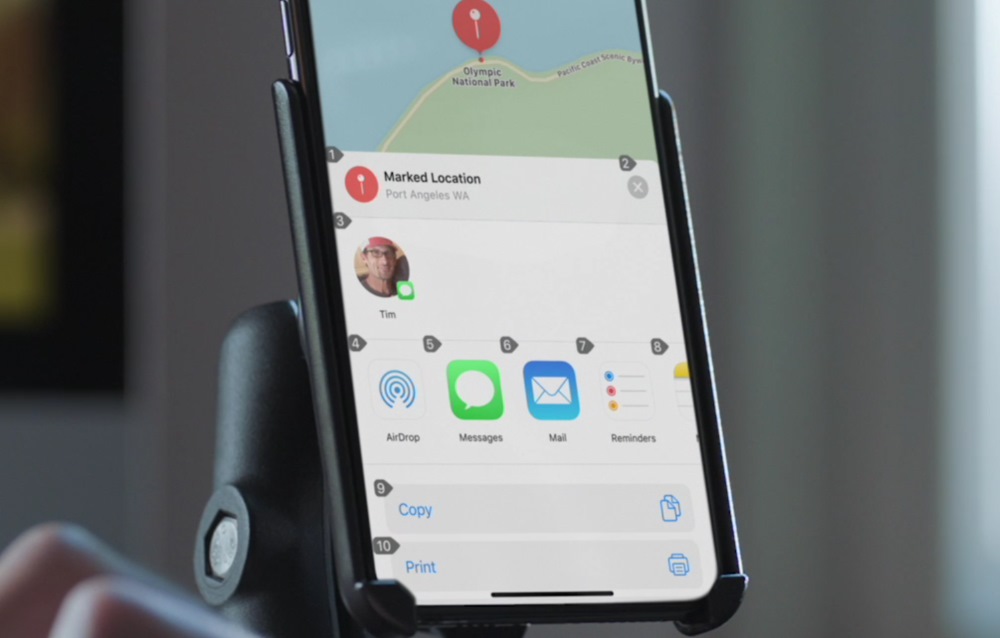A blog about how-to, internet, social-networks, windows, linux, blogging, tips and tricks.
04 June 2019
Should You Buy Your iPhone From Apple or Your Carrier?
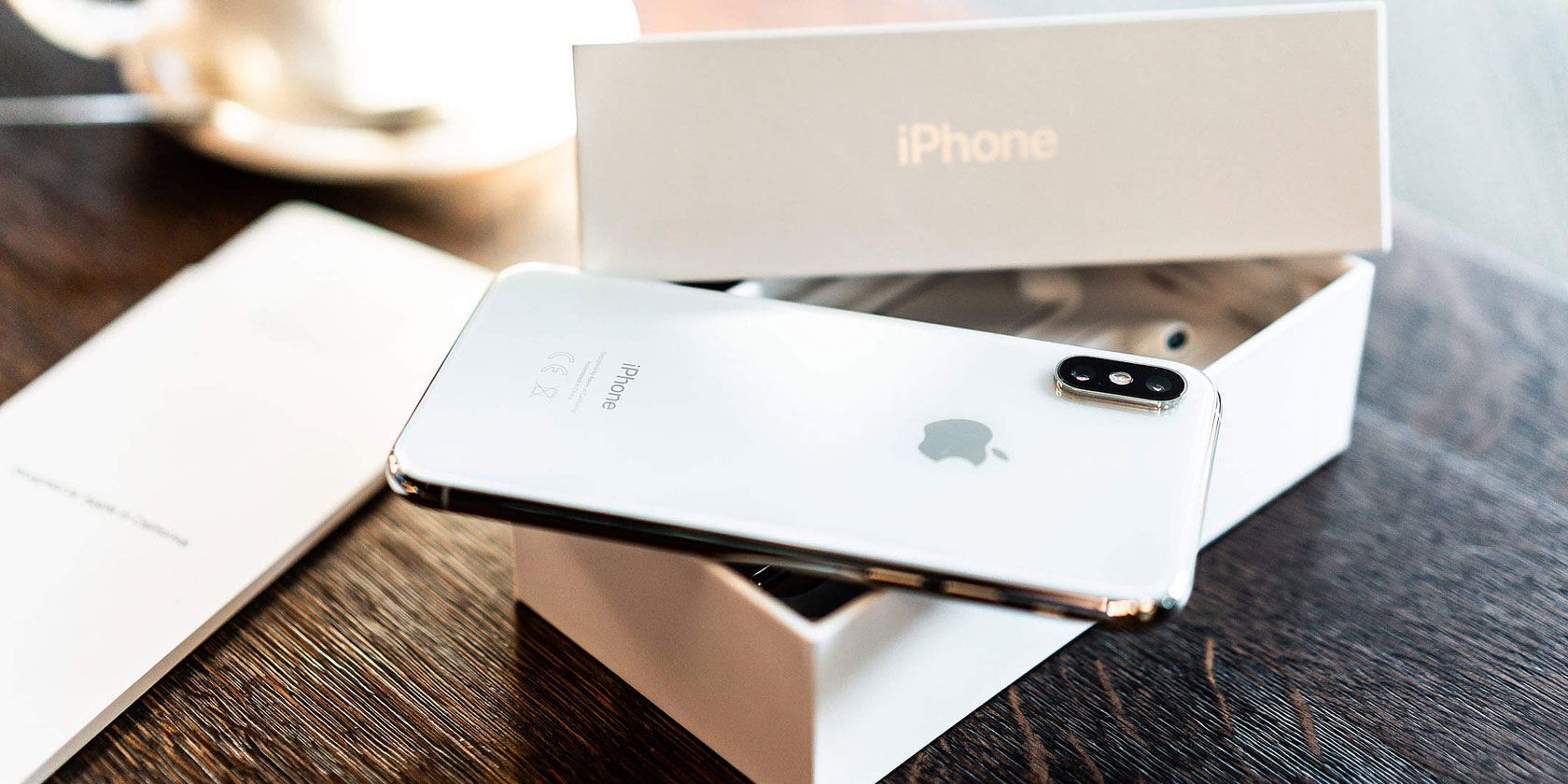
When it comes to getting an iPhone, it’s a buyer’s market. Every major cell phone carrier has them, and they all compete against each other to bring you the best deal.
And while Apple has always sold iPhones in its own stores, recent initiatives such as the iPhone Upgrade Program and Trade-In have made the company a serious contender for your phone buying business. Let’s see which is the better option.
Prices Are Basically the Same
In previous times, cell phone carriers would let you pay off your phone in monthly installments. What they didn’t tell you is that they charged you a bit more than the total price of your phone over the course of 24 months, for the privilege of being able to spread it out.
Apple’s iPhone Upgrade Program offered the same 24-month installment plan, with the option of upgrading to a new phone every year for free and trading in your old phone. If you paid the whole phone off, however, it didn’t cost you any more than if you had paid up front.
Carriers followed suit and now, for the most part, all carriers and Apple offer a monthly, no-money-down installment plan through which you purchase the phone from them over the course of 24 months. The monthly cost depends on the iPhone model you want, but across the board, they’re all the same.

There are a few exceptions to this. AT&T offers a plan at a lower monthly rate for a total of 30 months. Apple offers a higher monthly rate and includes AppleCare+ or AppleCare+ with Theft and Loss.
Winner: Essentially a tie.
Carriers Have the Deals
Apple is famous for almost never having deals. It might, in fact, be contractually obligated with the carriers to avoid offering deals on iPhones so as not to undercut them.
Carriers, however, frequently feature deals in order to compete with each other. For example, in 2019, AT&T offered a free iPhone XR with the purchase of any iPhone X or above. And Apple reporting its first profit warning in years could result in more deals than usual.
Winner: Carriers.
Locked or Unlocked?
While you can unlock a contract-locked phone, it’s a hassle, and you might have to wait for your contract to run out. The better move is to buy your phone unlocked in the first place.
An unlocked phone allows you to use that phone with any carrier, even if you’re not under contract with them. This is ideal for frequent international travelers, who can purchase a local SIM card and stick in their iPhone for service abroad.
If you purchase your phone through your carrier under a two-year service contract, the iPhone you buy might be locked to that carrier until that contract is up. Even after the two years, if you want to unlock it, you’ll need to contact them.
When you buy a phone from Apple under the iPhone Upgrade Program, it comes as a certified unlocked device. You can even pair it with an existing plan and retain your unlocked status.
Winner: Apple.
Insurance vs. AppleCare+
Both cell carriers and Apple offer all sorts of ways to protect your phone.
AppleCare+ comes in two different tiers: AppleCare+ and AppleCare+ with Theft and Loss. The pricing is different depending on what iPhone you have, but typically the Theft and Loss version costs about $100 more than the regular version. It includes, however, two opportunities to replace your iPhone if it gets lost or stolen.
Regular AppleCare+ covers repairs caused by accidental damage, but you must still physically have the device. See our breakdown of AppleCare+ to find out if it’s worth it for you.
Carrier insurance plans like Verizon Total Mobile Protection, AT&T Mobile Protection, or T-Mobile Premium Device Protection have lots of different tiers and price plans. However, they roughly break down along the same lines that AppleCare does. On the whole, perhaps, cellular company insurance plans are slightly cheaper than AppleCare.

There are two major differences between AppleCare+ and a carrier’s insurance: the level of customer service and the quality of your replacement device.
Apple commits to providing you with a “new or equivalent to new” product when it replaces your iPhone. Its customer service is set up so that all you have to do is walk into an Apple Store and get a same-day replacement. Apple Stores are stocked with almost every model of replacement iPhone available for quick service.
Carriers, on the other hand, don’t have access to the same level of quality assurance for Apple’s products that Apple does. Often, your replacement phone will not be at the same level of “new or equivalent to new” that Apple promises. Instead, it will be a refurbished phone with non-Apple certified parts. Additionally, carrier insurance typically requires verification, and devices are often shipped through the mail.
Winner: Apple.
So, Apple Store or Phone Store?
You were once able to find some real savings by shopping around the various mobile carriers. But these days most carriers, including Apple, offer roughly the same price for a more-or-less equivalent service. However, Apple is a tiny bit better in terms of convenience, customer service, and repair quality. The Apple Store will probably provide you with a better experience, but if you time it right, your carrier might offer you a better price.
The Apple Store has another advantage: these locations are licensed to sell you an iPhone under a carrier’s plan. As a result, if you buy your phone at an Apple Store, you can actually see how much each phone will cost you under each plan. At each carrier’s stores, they will only show you how much it will cost under their own plan. By presenting all the options to you, Apple offers a level of transparency that the other stores can’t match.
Try a Refurbished Phone for Even More Discounts
Maybe saving money is your number-one priority, and you can’t wait for a seasonal discount at a carrier store. If so, you can buy a refurbished or used iPhone at Best Buy or Apple, or even online at Gazelle. Outside of an Apple Certified Refurbished product, the quality can be questionable, but that might not matter to you depending on how much you save.
Read the full article: Should You Buy Your iPhone From Apple or Your Carrier?
Read Full Article
How to Write an Ebook: Everything You’ll Need

Many of us have thought about writing an ebook at one time or another, whether it may be a novel or a non-fiction tome. If you need the nudge to get started here’s how to write an ebook.
Writing a book isn’t easy, but employing a good workflow can make it more manageable. In this article we’ll explain how to write an ebook, from the steps you should take to the tools you should use.
Preparation: Collect Your Research and Notes
Most of the time, you’ll already have an idea for what your ebook is going to be about. If not, it’s time to start brainstorming. Assuming you do have an idea, that doesn’t mean you’re ready to start writing just yet.
Ideally, you’ll have as much information as you can ready before you start to write. For fiction, this means compiling character notes, settings, plot details, and other bits of lore. For a non-fiction book, this would be your research and sources.

If you’re more of a hands-on type, you might want to capture your notes or research with a pen and paper. Assuming you’re more digitally inclined, there are plenty of apps that can help you with this.
Evernote and Microsoft OneNote are two of the most popular note apps available, but they’re not the only ones. Google Keep, Apple Notes, and relative newcomer Notion are all viable options as well. Some of these apps have built-in scanning functionality that can even help you organize your pen and paper notes.
Writing: Getting to the First Draft
Some people prefer to just start writing and see what comes out. Others prefer to prepare and plan everything in advance so they know the structure before they start writing. Both methods have their strengths, but for non-fiction, you’ll definitely see major benefits for planning ahead.
If you’re a planner, there are a few tools you can use. Microsoft Word has an Outline view that can make laying out the structure of your book easy. Dedicated outlining apps like OmniOutliner can also help streamline your planning.

When it comes to writing your first draft, it’s all about what makes you comfortable. If you prefer simplicity you can use a simple text editor. If you want some more features, a word processor like Microsoft Word is great, while LibreOffice is a great free alternative. For writing from anywhere, Google Docs is a great free tool (here’s how to use Google Docs).
Some writers might want an even more powerful tool. That’s where dedicated apps like Scrivener enter the fray. Scrivener can take your first draft all the way to a finished ebook, but it does come with a steep learning curve.
Editing: Revisiting and Revising Your Work
Your first draft is just that: a first draft. To truly make your ebook shine, you’ll need to make one or more revisions. This could range from some heavy edits to full rewrites. When you think it couldn’t possibly be any better, give it one more pass.
Get some other people to read your drafts too, if you can. Even better, hire a copy editor, line editor, or both. Copy editors check your grammar and punctuation for errors. Line editors read over the manuscript and check for overall larger issues affecting the story you’re telling.
When it comes to working with editors, Microsoft Word is the industry standard. You can’t count on a copy or line editor using whatever obscure format you wrote your manuscript in. You can absolutely count on them using Word, so this is the default option.
If you need to use the Word format, specifically the Track Changes feature, but don’t want to pay for word, you have another option. Recent versions of LibreOffice map fairly well to Microsoft Word. You might run into some issues with fonts, but LibreOffice will do in a pinch.
Cover Design: People Judge Books by Their Covers
No matter how much you slave over your manuscript, nobody will read it if the cover looks amateurish. Your final draft could be perfect, but with a boring design on the cover, nobody will ever know.
Don’t worry if you don’t have design skills. You can use a site like 99designs to find a designer for your cover. Alternatively, you can hire a freelancer on a site like Fiverr. There are also these alternatives to Fiverr if you’d rather use a different service.

If you do happen to have design skills, that’s even better. You can use tools included in the Adobe Creative Cloud suite like InDesign or Photoshop. For something even easier, you can try Canva. Depending on what you need, you can even use Microsoft Word to design your cover. Just remember to make your ebook cover look professional.
Layout: Creating the Finished Product
You should now have your finished and polished manuscript as well as a cover design. So it’s time to put it all together into your final ebook. Before you start, there are a few things left to consider.
First, decide where you’re going to sell or distribute your ebook. Amazon is the king of ebook sales these days, but it’s not the only one. If you’re just looking to get your book out there, you might want to consider giving it away for free. Here are the free ebook download sites to get you started.
You’ll use different formats depending on where you distribute. PDF is a widely used format, while Amazon and its devices use a proprietary format. EPUB and MOBI are other popular formats, with MOBI also working on Kindle devices.

As mentioned above, Scrivener can compile your manuscript to several different ebook formats. All you need to do is add in your author details and cover art. If you want to distribute on Apple devices, you need to use iBooks Author.
For more graphically intense ebooks, you might need different tools. Microsoft PowerPoint can come in handy for these types of ebooks, as can Adobe InDesign.
How to Write an Ebook: Read More First!
No matter how experienced you are, you can always improve as a writer. One of the best ways to learn as a writer is to read more books. Read everything you can from fiction to non-fiction, even genres you generally aren’t fond of.
Unless you want to compile a massive library (which some of us do), you probably have a finite amount of space for books. If you’re a voracious reader but don’t want to surround yourself with books, reading on a tablet is the solution. So, with that in mind, here’s our list of the best tablets for reading digital books.
Read the full article: How to Write an Ebook: Everything You’ll Need
Read Full Article
Get One Year of Award-Winning Protection With Private Internet Access VPN for 58% Off
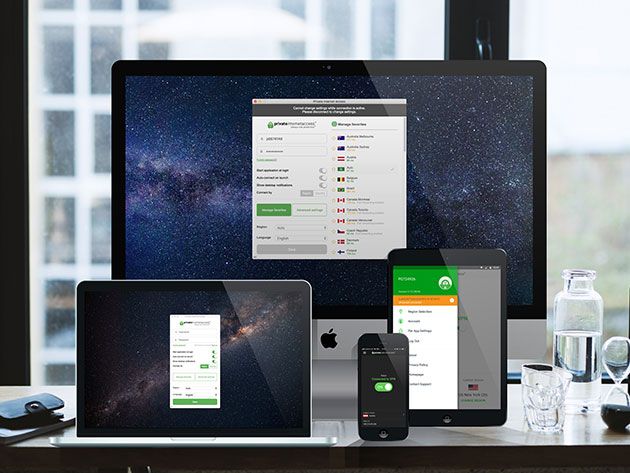
In the past couple of years, online privacy has become a hot topic. From social networks to government agencies, it can feel like everyone wants a slice of your personal data. Private internet Access VPN helps you avoid the snoopers, with a network of masking servers around the world. This award-winning service also helps you bypass restrictions and stay secure. Right now, you can get one year of service for $49.99 at MakeUseOf Deals.
Award-Winning Protection
Using a VPN is pretty essential if you value privacy. While some services will slow you down, Private internet Access VPN offers a reliable and speedy service.
By routing your traffic through masked servers, Private internet Access is able to disguise your IP address and physical location. In addition, all your data is protected by AES encryption. Combined, these features ensure that no-one can track you around the web or hack your connection.
Private internet Access VPN is available to download on all major desktop and mobile platforms. One subscription covers 10 devices, and you get unlimited bandwidth. And with 3,300 servers spread across 32 countries, you can sidestep geographic restrictions to stream your favorite shows.
Private internet Access VPN is the online guardian we all need in 2019. The service can block ads, shut down malware and prevent incoming attacks with a robust firewall.
One Year for $49.99
One year of service is worth $119.40, but you can get your Private internet Access VPN subscription now for $49.99.
Read the full article: Get One Year of Award-Winning Protection With Private Internet Access VPN for 58% Off
Read Full Article
Facebook can be told to cast a wider net to find illegal content, says EU court advisor
How much of an obligation should social media platforms be under to hunt down illegal content?
An influential advisor to Europe’s top court has taken the view that social media platforms like Facebook can be required to seek out and identify posts that are equivalent to content that an EU court has deemed illegal — such as hate speech or defamation — if the comments have been made by the same user.
Platforms can also be ordered to hunt for identical repostings of the illegal content.
But there should not be an obligation for platforms to identify equivalent defamatory comments that have been posted by any user, with the advocate general opining that such a broad requirement would not ensure a fair balance between the fundamental rights concerned — flagging risks to free expression and free access to information.
“An obligation to identify equivalent information originating from any user would not ensure a fair balance between the fundamental rights concerned. On the one hand, seeking and identifying such information would require costly solutions. On the other hand, the implementation of those solutions would lead to censorship, so that freedom of expression and information might well be systematically restricted.”
We covered this referral to the CJEU last year.
It’s an interesting case that blends questions of hate speech moderation and the limits of robust political speech, given that the original 2016 complaint of defamation was made by the former leader of the Austrian Green Party, Eva Glawischnig.
An Austrian court agreed with Glawischnig that hate speech posts made about her on Facebook were defamatory and ordered the company to remove them. Facebook did so, but only in Austria. Glawischnig challenged its partial takedown and in May 2017 a local appeals court ruled that it must remove both the original posts and any verbatim repostings and do so worldwide, not just in Austria.
Further legal appeals led to the referral to the CJEU which is being asked to determine where the line should be drawn for similarly defamatory postings, and whether takedowns can be applied globally or only locally.
On the global takedowns point, the advocate general believes that existing EU law does not present an absolute blocker to social media platforms being ordered to remove information worldwide.
“Both the question of the extraterritorial effects of an injunction imposing a removal obligation and the question of the territorial scope of such an obligation should be analysed, in particular, by reference to public and private international law,” runs the non-binding opinion.
Another element relates to the requirement under existing EU law that platforms should not be required to carry out general monitoring of information they store — and specifically whether that directive precludes platforms from being ordered to remove “information equivalent to the information characterised as illegal” when they have been made aware of it by the person concerned, third parties or another source.
On that, the AG takes the view that the EU’s e-Commerce Directive does not prevent platforms from being ordered to take down equivalent illegal content when it’s been flagged to them by others — writing that, in that case, “the removal obligation does not entail general monitoring of information stored”.
Advocate General Maciej Szpunar’s opinion — which can be read in full here — is not the last word on the matter, with the court still to deliberate and issue its final decision (usually within three to six months of an AG opinion). However advisors to the CJEU are influential and tend to predict which way the court will jump.
We reached out to Facebook for comment. A spokesperson for the company told us:
This case raises important questions about freedom of expression online and about the role that internet platforms should play in locating and removing speech, particularly when it comes to political discussions and criticizing elected officials. We remove content that breaks the law and our priority is always to keep people on Facebook safe. However this opinion undermines the long-standing principle that one country should not have the right to limit free expression in other countries. We hope the CJEU will clarify that, even in the age of the internet, the scope of court orders from one country must be limited to its borders.
This report was updated with comment from Facebook
Read Full Article
Aptoide, a Play Store rival, cries antitrust foul over Google hiding its app
As US regulators gear up to launch another antitrust probe of Google’s business, an alternative Android app store is dialling up its long time complaint of anti-competitive behavior against the search and smartphone OS giant.
Portugal-based Aptoide is launching a campaign website to press its case and call for Google to “Play Fair” — accusing Mountain View of squeezing consumer choice by “preventing users from freely choosing their preferred app store”.
Aptoide filed its first EU antitrust complaint against Google all the way back in 2014, joining a bunch of other complainants crying foul over how Google was operating Android.
And while the European Commission did eventually step in, slapping Google with a $5BN penalty for antitrust abuses last summer after a multi-year investigation, rivals continue to complain the Android maker still isn’t playing fair.
In the case of Aptoide, the alternative Android app store says Google has damaged its ability to compete by unjustifiably flagging its app as insecure.
“Since Summer 2018, Google Play Protect flags Aptoide as a harmful app, hiding it in users’ Android devices and requesting them to uninstall it. This results in a potential decrease of unique Aptoide users of 20%. Google Play Protect is Google’s built-in malware protection for Android, but we believe the way it works damages users’ rights,” it writes on the site, where it highlights what it claims are Google’s anti-competitive behaviors, and asks users to report experiences of the app being flagged.
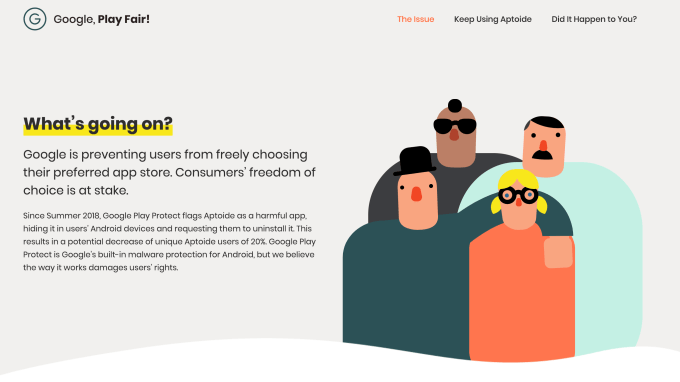
Aptoide says Google has engaged in multiple behaviors that make it harder for it to gain or keep users — thereby undermining its ability to compete with Google’s own Play Store.
“In 2018, we had 222 million yearly active users. Last month (May’19), we had 56 million unique MAU,” co-founder and CEO Paulo Trezentos tells TechCrunch. “We estimate that the Google Play removal and flagging had cause the loss of 15% to 20% of our user base since June’18.”
(The estimate of how many users Aptoide has lost was performed using Google SafetyNet API which he says allows it to query the classification of an app.)
“Fortunately we have been able to compensate that with new users and new partnerships but it is a barrier to a faster growth,” he adds.
“The googleplayfair.com site hopes to bring visibility to this situation and help other start ups that may be under the same circumstances.”
Among the anti-competitive behaviors Aptoide accuses Google of engaging in are flagging and suspending its app from users’ phones — without their permission and “without a valid reason”.
“It hides Aptoide. User cannot see Aptoide icon and cannot launch. Even if they go to ‘settings’ and say they trust Aptoide, Aptoide installations are blocked,” he says. “If it looks violent, it’s because it’s a really aggressive move and impactful.”
Here’s the notification Aptoide users are shown when trying to override Google’s suspension of Aptoide at the package manager level:
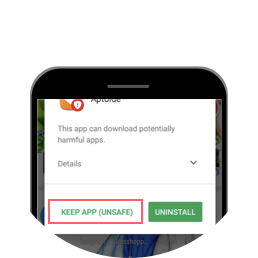
Even if an Aptoide user overrides the warning — by clicking ‘keep app (unsafe)’ — Trezentos says the app still won’t work because Google blocks Aptoide from installing apps.
“The user has to go to Play Protect settings (discover it it’s not easy) and turn off Play protect for all apps.”
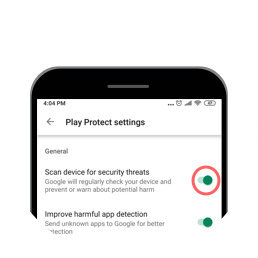
He argues there is no justification for Aptoide’s alternative app store being treated in this way.
“Aptoide is considered safe both by security researchers [citing a paper by Japanese security researchers] and by Virus Total (a company owned by Google),” says Trezentos, adding: “Google is removing Aptoide from users phone only due to anticompetitive practices. Doesn’t want anyone else as distribution channel in Android.”
On the website Aptoide has launched to raise awareness and inform users and other startups about how Google treats its app, it makes the claim that its store is “proven… 100% secure” — writing:
We would like to be treated in a fair way: Play Protect should not flag Aptoide as a harmful app and should not ask users to uninstall it since it’s proven that it’s 100% secure. Restricting options for users goes against the nature of the Android open source project [ref10]. Moreover, Google’s ongoing abusive behaviour due to it’s dominant position results in the lack of freedom of choice for users and developers.We would like to keep allowing users and developers to discover and distribute apps in the store of their choice. A healthy competitive market and a variety of options are what we all need to keep providing the best products.
Trezentos stands by the “100% secure” claim when we query it.
“We think that we have a safer approach. We call it ‘security by design’: We don’t consider all apps secure in the same way. Each app has a badge depending on the reputation of the developer: Trusted, Unknown, Warning, Critical,” he says.
“We are almost 100% sure that apps with a trusted badge are safe. But new apps from new developers, [carry] more risk in spite of all the technology we have developed to detect it. They keep the badge ‘unknown‘ until the community vote it as trusted. This can take some weeks, it can take some months.”
“Of course, if our anti-malware systems detect problems, we classify it as ‘critical’ and the users don’t see it at all,” he adds.
Almost 100% secure then. But if Google’s counter claim to justify choking off access to Aptoide is that the app “can download potentially harmful apps” the same can very well be said of its Play Store. And Google certainly isn’t encouraging Android users to pause that.
On the competition front, Aptoide presents a clear challenge to Google’s Android revenues because it offers developers a more attractive revenue split — taking just 19%, rather than the 30% cut Google takes off of Play Store wares. (Aptoide couches the latter as “Google’s abusive conditions”.)
So if Android users can be persuaded to switch from Play to Aptoide, developers stand to gain — and arguably users too, as app costs would be lower.
While, on the flip side, Google faces its 30% cut being circumvented. Or else it could be forced to reduce how much it takes from developers to give them a greater incentive to stock its shelves with great apps.
As with any app store business, Aptoide’s store of course requires scale to function. And it’s exactly that scale which Google’s behavior has negatively impacted since it began flagging the app as insecure a year ago, in June 2018, squeezing the rival’s user-base by up to a fifth, as Aptoide tells it.
Trezentos says Google’s flagging of its app store affects all markets and “continues to this day” — despite a legal ruling in its favor last fall, when a court in Portugal ordered Google to stop removing Aptoide without users’ permission.
“Google is ignoring the injunction result and is disregarding the national court. No company, independently of the size, should be above court decisions. But it seems that is the case with Google,” he says.
“Our legal team believe that the decision applies to 82 countries but we are pursuing first the total compliance with the decision in Portugal. From there, we will seek the extension to other jurisdictions.”
“We tried to contact Google several times, via Google Play Protect feedback form and directly through LinkedIn, and we’ve not had any feedback from Google. No reasons were presented. No explanation, although we are talking about hiding Aptoide in millions of users’ phones,” he adds.
“Our point in court it’s simple: Google is using the control at operating system level to block competitors at the services level (app store, in this case). As Google has a dominant position, that’s not legal. Court [in Portugal] confirmed and order Google to stop. Google didn’t obey.”
Aptoide has not filed an antitrust complaint against Google in the US — focusing its legal efforts on that front on local submissions to the European Commission.
But Trezentos says it’s “willing to cooperate with US authorities and provide factual data that shows that Google has acted with anti-competitive behaviour” (although he says no one has come knocking to request such collaboration yet.)
In Europe, the Commission’s 2018 antitrust decision was focused on Android licensing terms — which led to Google tweaking the terms it offers Android OEMs selling in Europe last fall.
Despite some changes rivals continue to complain that its changes do not go far enough to create a level playing field for competition.
There has also not been any relief for Aptoide from the record breaking antitrust enforcement. On the contrary Google appears to have dug in against this competitive threat.
“The remedies are positive but the scope is very limited to OEM partnerships,” says Trezentos of the EC’s 2018 Android antitrust decision. “We proposed additionally that Google would be obliged to give the same access privileges over the operating system to credible competitors.”
We’ve reached out to the Commission for comment on Aptoide’s complaint.
While it’s at least technically possible for an OEM to offer an Android device in Europe which includes key Google services (like search and maps) but preloads an alternative app store, rather than Google Play, it would be a brave device maker indeed to go against the consumer grain and not give smartphone buyers the mainstream store they expect.
So, as yet, there’s little high level regulatory relief to help Aptoide. And it may take a higher court than a Portuguese national court to force Google to listen.
But with US authorities fast dialling up their scrutiny of Mountain View, Aptoide may find a new audience for its complaint.
“The increased awareness to Google practices is reaching the regulators,” Trezentos agrees, adding: “Those practices harm competition and in the end are bad for developers and mobile users.”
We reached out to Google with questions about its treatment of Aptoide’s rival app store — but at the time of writing the company had not responded with any comment.
There have also been some recent rumors that Aptoide is in talks to supply its alternative app store for Huawei devices — in light of the US/China trade uncertainties, and the executive order barring US companies from doing business with the Chinese tech giant, which have led to reports that Google intends to withdraw key Android services like Play from the company.
But Trezentos pours cold water on these rumors, suggesting there has been no change of cadence in its discussions with Huawei.
Read Full Article
WWDC 2019: Apple Finally Kills Off iTunes
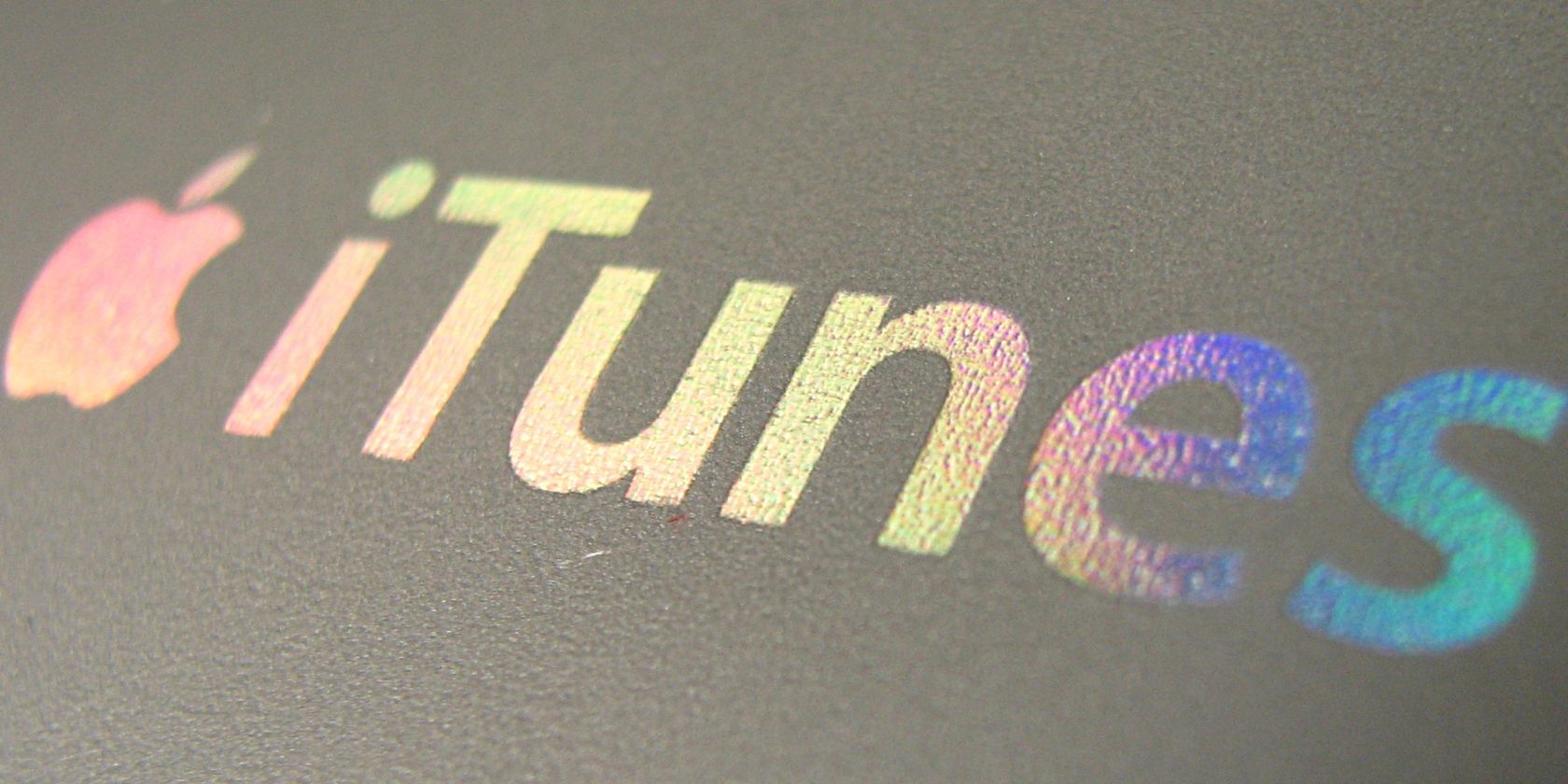
Apple iTunes is dead. Long live Apple Music, Apple TV, and Apple Podcasts. That’s right, after 18 years of service, Apple is killing iTunes off. Finally. Much to the relief of anyone who has struggled to get to grips with the bloated mess we call iTunes.
A Brief History of Apple iTunes
In 2001, Apple launched iTunes, which it described at the time as “the world’s best and easiest to use jukebox software.” It was created to help Mac users create and manage their music library, and it did exactly that. And at the time it was revolutionary.
Apple built iTunes to be a one-stop-shop for your entertainment needs. Unfortunately, that meant iTunes became increasingly bloated as people’s digital habits evolved. And as iTunes became more bloated it became less usable. Hence Apple’s decision to kill iTunes.
The End Is Nigh for Apple iTunes
Apple announced the end is nigh for iTunes at WWDC 2019. Craig Federighi, Apple’s senior vice president of Software Engineering, actually cracked a funny by suggesting Apple was going to add even more bloat to this already bloated piece of software.
iTunes started off the rip, mix and burn music…
RIP and burn, iTunes
— Marques Brownlee (@MKBHD) June 3, 2019
Thankfully, he was joking, and Apple is actually splitting iTunes up into three separate apps. These being Apple Music, Apple TV, and Apple Podcasts. These are all new apps built from scratch, so they look and feel like they’re from 2019 rather than 2001.
Apple Music will be solely focused on music, be based on iTunes, and boast some of its best features. You’ll be able to access your own library of music, or (if you pay for a subscription) discover the millions of songs available to stream.
Apple TV will be the new home for your movies, TV shows, and (when it launches) Apple TV+. You’ll be able to watch all of your content in the app, and pick up where you left off across your devices. On Mac, the Apple TV app will also support 4K content.
Apple Podcasts will bring “700,000 of the best entertainment, comedy, news, and sports shows” to your Mac. You’ll be able to search by podcasts “by title, topic, guest, host, and more,” and subscribe to specific shows to be notified about new episodes.
Goodbye and Good Riddance to iTunes
The new apps will arrive as part of Catalina, the next version of macOS. Catalina will be released this fall, which gives you just a few months left to put up with use iTunes. So, in the meantime, here’s how to see everything you’ve ever purchased on iTunes.
Image Credit: Fdecomite/Flickr
Read the full article: WWDC 2019: Apple Finally Kills Off iTunes
Read Full Article
WWDC 2019: Apple Reveals iPadOS for iPads
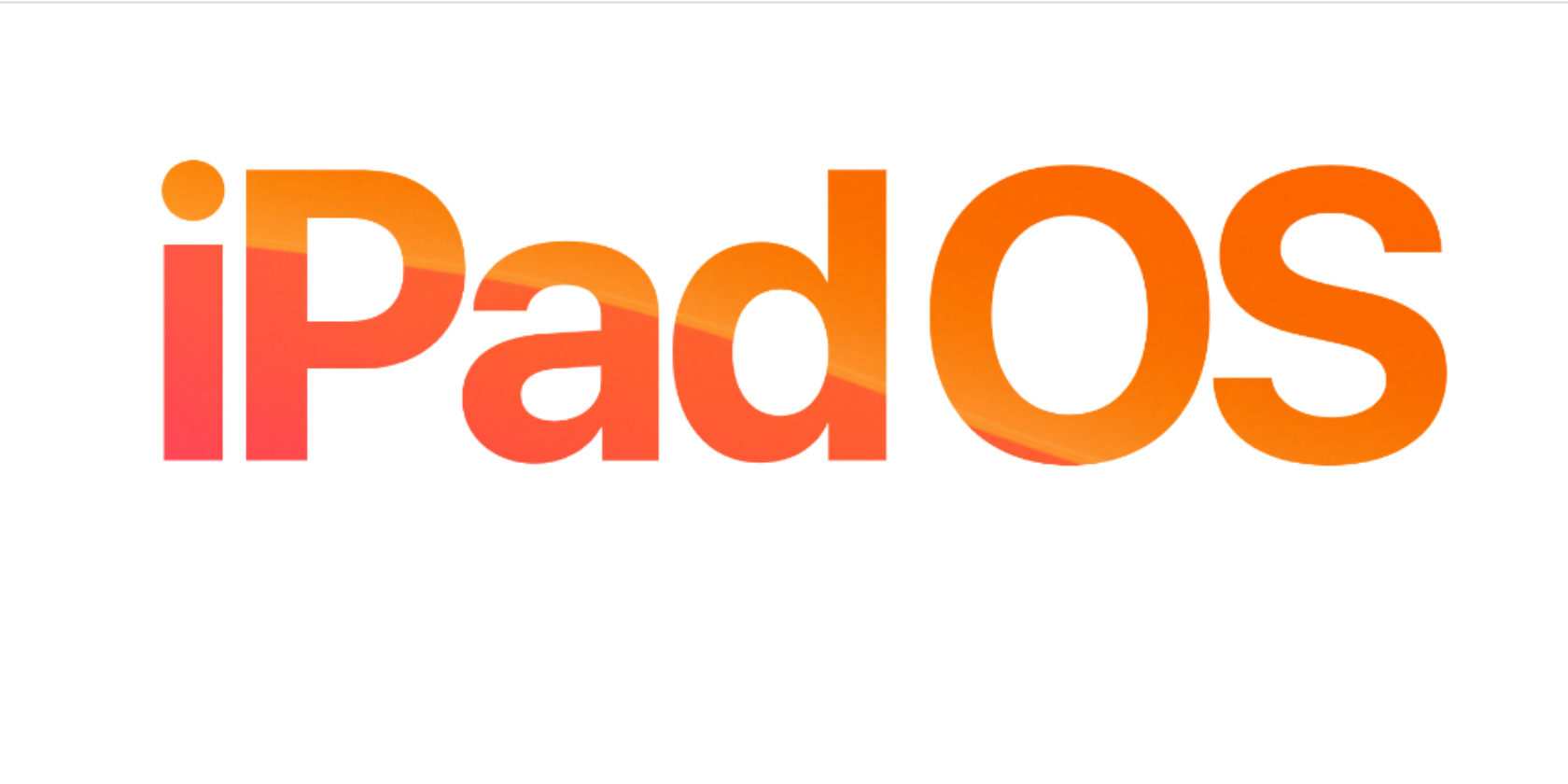
At WWDC 2019, Apple has announced a brand new operating system. Called iPadOS, this is specifically designed for iPads. While built on the same foundation as iOS, iPadOS introduces features designed to make better use of the iPad hardware.
Until now, iOS has powered iPhones and iPads. However, in the future, while iOS will continue to power your iPhone, your iPad will have its own dedicated operating system. Allowing Apple to make your iPad work even better than ever.
The Best New iPadOS Features
Craig Federighi, Apple’s senior vice president of Software Engineering, said, “iPadOS delivers exciting features, including a new Home screen with widgets, more powerful multitasking and new tools that make using Apple Pencil even more natural.”
The new Home screen makes use of the larger screen, showing more apps on each page. You’ll also be able to access widgets more quickly. Updates to Split View and Slide Over mean iPad owners will be able to work with multiple files and documents simultaneously.
There’s better support for the Apple Pencil too, with Apple Pencil integrated into iPadOS. Meanwhile, improvements to the Files app adds iCloud Drive support for folder sharing, support for external drives, and Quick Actions designed to make you more productive.
Lots of great multitasking improvements for iPadOS. Been waiting for this forever. pic.twitter.com/CQBRKknnP1
— Marques Brownlee (@MKBHD) June 3, 2019
The new iPadOS also introduces desktop-class browsing with Safari, improved text editing with new gestures, a floating keyboard making one-handed typing easier, custom fonts to help you create beautiful documents, and a dark mode for working in low-light conditions.
You can read more about all of the features coming to iPadOS on the Apple Newsroom. You have plenty of time to get your head around the changes, as Apple isn’t releasing iPadOS until the fall. It will then be available as a free software update.
Helping You Do More With Your iPad
Apple has clearly put a lot of thought into iPadOS. OK, so it doesn’t offer anything revolutionary over iOS, but it should help iPad owners do more with their devices. Which, given how many people use iPads for productive purposes, is good enough.
If you haven’t yet taken the plunge and purchased an iPad, perhaps iPadOS is the push you need. In which case, you should read our iPad buying guide. After all, there are so many different options available that choosing one can be difficult.
Read the full article: WWDC 2019: Apple Reveals iPadOS for iPads
Read Full Article
Apple will soon require apps with any third-party logins to offer Sign In With Apple also
Something from the fine print out of today’s WWDC keynote. Sign In With Apple didn’t get a ton of time on-stage today, but it should prove a nice new feature for the company — and for those concerned about handing over sensitive information to third-parties.
Turns out it will also be required for app developers utilizing any sort of third party login service. If they offer social logins or other third party options, they’ll have to offer Sign In With Apple as an option.
TechCrunch has learned that the company will require the new feature for developers utilizing services like Google and Facebook’s third-party login. Apple acknowledges the requirement at the tale end of its newly updated App Store Review Guidelines.
“Sign In with Apple will be available for beta testing this summer,” the company writes. “It will be required as an option for users in apps that support third-party sign-in when it is commercially available later this year.”
Yes, that means that apps with third party logins like Google or Facebook or whatever other service must offer Apple’s sign in service as well — once the service is out of beta later this year. Apple’s position on this is that there is a real benefit to offering users a sign-in option that does not require a user to hand over their personal data to an outside third-party company when trying to use a service.
A company like Bird, for instance, would want to offer customers the quickest possible signup process to get them onto a scooter. Right now, that means a social login that can put a user as little as one tap away from a ride. The tradeoff, of course, is that now Facebook knows that user is logging into that app and whatever information they’ve chosen to share with Facebook can be anonymously paired with that data to serve ads etc.
Apple’s argument is that the consumer benefits if they do not have to pass along information to anyone other than the direct company they are working with — and even then they do not have to give them anything personally identifiable.
Apple noted the lengths it took to ensure user privacy during today’s event. The ability to auto-generate a random “relay” email address that forwards to the users’ received one of the biggest applause breaks of the event.
It wasn’t clear on stage but unless a developer requests an email there is literally no second step to signing into/up for an app or service with Apple’s new sign-in service. It’s literally the holy grail of signups – one single tap and it’s done. This is huge for apps that want to get people onboarded as fast as possible, especially for use in the moment. And, it’s worth noting, they also get the benefit of not having to hand off inferred usage data to outside sign-in services from other companies.
Requiring developers to utilize the feature could go a ways toward minimizing the use of popular logins like Facebook — though it could also rub a few companies the wrong way in the process.
Read Full Article
Apple’s Voice Control improves accessibility OS-wide on all its devices
Apple is known for fluid, intuitive user interfaces, but none of that matters if you can’t click, tap, or drag because you don’t have a finger to do so with. For users with disabilities the company is doubling down on voice-based accessibility with the powerful new Voice Control feature on Macs and iOS (and iPadOS) devices.
Many devices already support rich dictation, and of course Apple’s phones and computers have used voice-based commands for years (I remember talking to my Quadra). But this is a big step forward that makes voice controls close to universal — and it all works offline.
The basic idea of Voice Control is that the user has both set commands and context-specific ones. Set commands are things like “Open Garage Band” or “File menu” or “Tap send.” And of course some intelligence has gone into making sure you’re actually saying the command and not writing it, like in that last sentence.
But that doesn’t work when you have an interface that pops up with lots of different buttons, fields, and labels. And even if every button or menu item could be called by name, it might be difficult or time-consuming to speak everything out loud.
To fix this Apple simply attaches a number to every UI item in the foreground, which a user can show by saying “show numbers.” Then they can simply speak the number or modify it with another command, like “tap 22.” You can see a basic workflow below, though of course without the audio cues it loses a bit:
Remember that these numbers may be more easily referenced by someone with little or no vocal ability, and could in fact be selected from using a simpler input like a dial or blow tube. Gaze tracking is good but it has its limitations, and this is a good alternative.
For something like maps, where you could click anywhere, there’s a grid system for selecting where to zoom in or click. Just like Blade Runner! Other gestures like scrolling and dragging are likewise supported.
Dictation has been around for a bit but it’s been improved as well; You can select and replace entire phrases, like “Replace ‘be right back’ with ‘on my way.’ ” Other little improvements will be noted and appreciated by those who use the tool often.
All the voice processing is done offline, which makes it both quick and robust to things like signal problems or use in foreign countries where data might be hard to come by. And the intelligence built into Siri lets it recognize names and context-specific words that may not be part of the base vocabulary. Improved dictation means selecting emoji and adding dictionary items is a breeze.
Right now Voice Control is supported by all native apps, and third party apps that use Apple’s accessibility API should be able to take advantage of it easily. And even if they don’t do it specifically, numbers and grids should still work just fine, since all the OS needs to know are the locations of the UI items. These improvements should appear in accessibility options as soon as a device is updated to iOS 13 or Catalina.
Read Full Article
Apple’s Voice Control improves accessibility OS-wide on all its devices
Apple is known for fluid, intuitive user interfaces, but none of that matters if you can’t click, tap, or drag because you don’t have a finger to do so with. For users with disabilities the company is doubling down on voice-based accessibility with the powerful new Voice Control feature on Macs and iOS (and iPadOS) devices.
Many devices already support rich dictation, and of course Apple’s phones and computers have used voice-based commands for years (I remember talking to my Quadra). But this is a big step forward that makes voice controls close to universal — and it all works offline.
The basic idea of Voice Control is that the user has both set commands and context-specific ones. Set commands are things like “Open Garage Band” or “File menu” or “Tap send.” And of course some intelligence has gone into making sure you’re actually saying the command and not writing it, like in that last sentence.
But that doesn’t work when you have an interface that pops up with lots of different buttons, fields, and labels. And even if every button or menu item could be called by name, it might be difficult or time-consuming to speak everything out loud.
To fix this Apple simply attaches a number to every UI item in the foreground, which a user can show by saying “show numbers.” Then they can simply speak the number or modify it with another command, like “tap 22.” You can see a basic workflow below, though of course without the audio cues it loses a bit:
Remember that these numbers may be more easily referenced by someone with little or no vocal ability, and could in fact be selected from using a simpler input like a dial or blow tube. Gaze tracking is good but it has its limitations, and this is a good alternative.
For something like maps, where you could click anywhere, there’s a grid system for selecting where to zoom in or click. Just like Blade Runner! Other gestures like scrolling and dragging are likewise supported.
Dictation has been around for a bit but it’s been improved as well; You can select and replace entire phrases, like “Replace ‘be right back’ with ‘on my way.’ ” Other little improvements will be noted and appreciated by those who use the tool often.
All the voice processing is done offline, which makes it both quick and robust to things like signal problems or use in foreign countries where data might be hard to come by. And the intelligence built into Siri lets it recognize names and context-specific words that may not be part of the base vocabulary. Improved dictation means selecting emoji and adding dictionary items is a breeze.
Right now Voice Control is supported by all native apps, and third party apps that use Apple’s accessibility API should be able to take advantage of it easily. And even if they don’t do it specifically, numbers and grids should still work just fine, since all the OS needs to know are the locations of the UI items. These improvements should appear in accessibility options as soon as a device is updated to iOS 13 or Catalina.
Read Full Article

